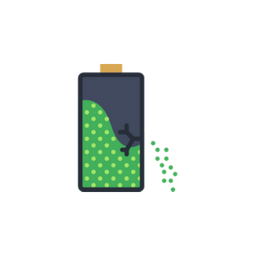
Best Android Libraries for Developers
All Android Apps tend to have very similar basic functionalities. They all need to look good, store some data locally, load images and communicate with a server. There is no need for each developer to reinvent the wheel every time they want to develop a new app. There are some very good Android libraries out there to help you with these basic functionalities. Let’s take a look at some of the very essential libraries —
HTTP Client-

In almost every app you build, you will need to connect with an API server to send and receive data. While Android provides a way to connect with the API server, it is quite basic and you will need to do a lot of the heavy lifting yourself and write repetitive code. Retrofit and Volley are two of the most popular libraries used in Android for handling HTTP. Having explored both of them, my team and I prefer Retrofit. It is fairly easy to set up, with enough configurations that a basic app will need and also helps you keep your code clean.
Database Management-

You generally need to store some data locally in your app. For simple data which can be stored using Key-Value pairs, you can make use of Shared Preferences, or use files for storing some data. But, for more complex data, you will need to use databases. Android provides us with SQLite and has also recently come up with a new library called Room which provides an abstraction layer over SQLite. Although I am yet to experiment with Room, I have tried using pure SQLite for a couple of my projects and it slowly becomes a nightmare to handle — with way too much repetitive code to write. The way to go for handling databases on Android is definitely Realm.
Image loading-

You would think that loading images on Android is a simple thing. It can be if you want to load just a single image here and there. All you need to do is write a single line of code —
mImageView.setImageBitmap(BitmapFactory.decodeFile(“pathToFile”));
But, when you load multiple images in this way, you soon realize that your app starts running out of memory. So you look around on the internet and add a few more lines. But now you need to load an image from an URL. So you need to add a few more lines of code. But till the image loads, your UI freezes — so now you need to load it in the background.
This is just the beginning when it comes to loading images on Android. There are even more problems when you want to load a circular image, have a placeholder till the image loads over the internet, cache images that load frequently and so on.
There are 2 popular libraries — Glide and Picasso — which take care of all your image loading problems. I prefer to use Glide since in my experience it has better cache and memory management, and better customization options. All you need is 1 line of code -
Glide.with(activity)
.load(url)
.into(imageView);
UI and UX-

You obviously want your app to look beautiful and clean, and provide a smooth experience for your users. Google has defined a nice set of guidelines for its Material design for building a good, stable Android App. Almost all the elements that are described in the Material design specifications are available in the standard Android Library.
My suggestion for you is to try to use the standard Android design libraries wherever you can — they are most likely to work best with all the varied device sizes and specifications that Android has.
Butterknife-

Android is quite clunky when it comes to mapping UI elements from XML to Java. One of my favorite examples to emphasize this is —
Toolbar toolbar = (Toolbar) findViewById(R.id.toolbar)
That is too much code just to access a toolbar from a view. Although starting with API 26, it has become slightly less clunky since you no longer need to cast your views to the correct type, it still does not result in very clean code.
Butterknife solves this problem for you. You can have all your View bindings together in one place at the top of your activity —
@BindView(R.id.toolbar) Toolbar toolbar;
@BindView(R.id.title) TextView title;
Leak Canary-


Leak Canary is a memory leak detection library that you must use before publishing your app to the Play Store. It is very easy to use and helps you detect memory leaks that can potentially make your app laggy, or even crash because of OutOfMemory exceptions.
Conclusion-
In conclusion, if it is a task which is required to be done in a standard App development there will be a good Android library for you to use. Always prefer libraries which come from reputable sources. And as all Android developers know — Jake Wharton and the engineers of Square are rockstars.
About RemotePanda
RemotePanda is a personalized platform for companies to hire remote talent and get the quality work delivered from the city Pune. The resources in our talent pool are our close network connections. While connecting them with you, we make sure to manage the quality, growth, legalities, and the delivery of their work. The idea is to make remote work successful for you. Get in touch with us to know more about Android libraries and also if you want to hire an Android app developer.

